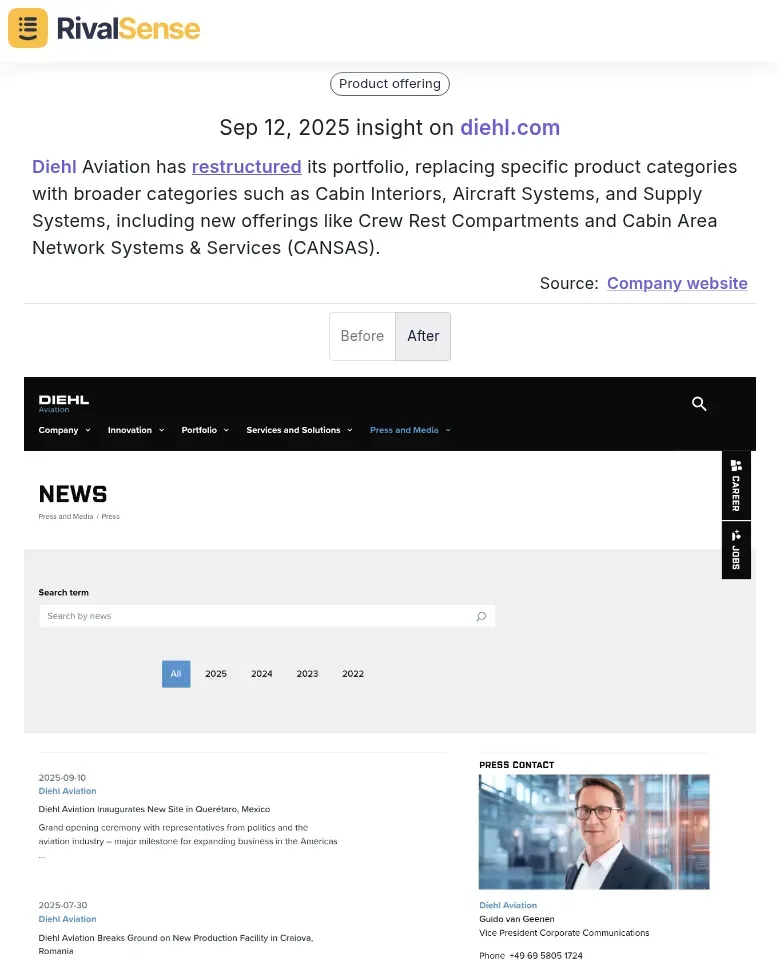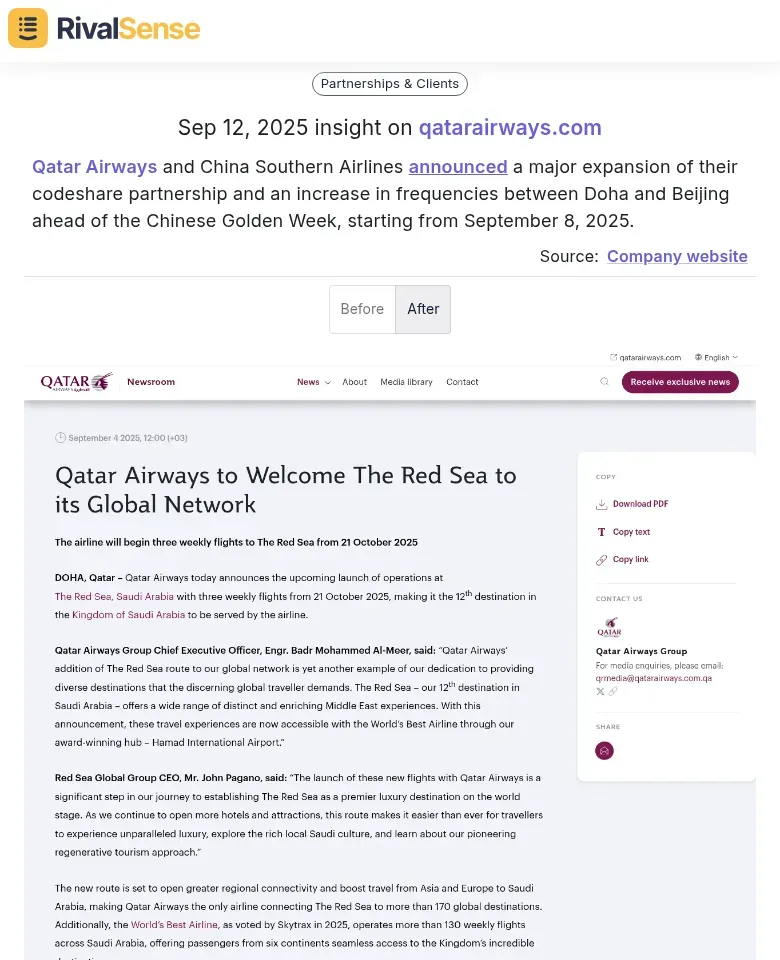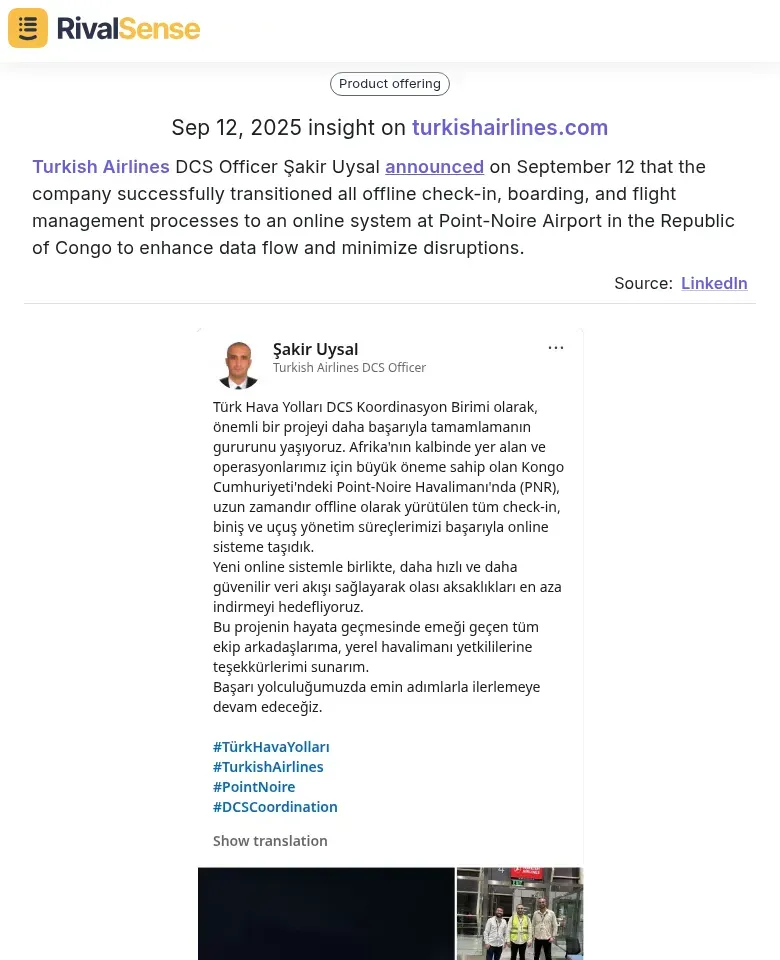Predictive Key Account Tracking: How Semiconductor Design Leaders Stay Ahead
The semiconductor design ecosystem has evolved into one of the most complex global supply chains, spanning dozens of countries and thousands of specialized suppliers. Traditional account management approaches—relying on current revenue data and reactive strategies—fail to address modern challenges like geopolitical disruptions, material shortages, and technology monopolies.
With 80% of development projects missing schedules and supply chain vulnerabilities causing industry-wide shocks, predictive key account tracking becomes essential. By leveraging advanced analytics, semiconductor companies can anticipate customer needs, identify high-potential accounts before competitors, and optimize sales coverage.
Practical steps include:
✅ Implement AI-driven tools to analyze customer behavior patterns
✅ Use predictive models to forecast account growth potential
✅ Establish real-time monitoring of key account activities
✅ Integrate supply chain data with customer insights for proactive risk mitigation
This approach transforms account management from reactive to predictive, delivering a sustainable competitive advantage in an increasingly volatile market.
Understanding Key Account Dynamics in Semiconductor Design
Semiconductor design accounts present unique challenges: 12-24 month sales cycles, multi-million dollar contracts, and extreme technical complexity requiring deep engineering expertise. These accounts operate globally with 500+ team members across multiple product categories.
Mobile applications have become critical enablers, providing real-time collaboration tools that allow design teams to review schematics, share updates, and make decisions instantly across time zones. Predictive tracking transforms traditional reactive account management by analyzing account strategy, performance data, and engagement patterns to anticipate needs before they arise.
Practical steps:
📱 Implement mobile collaboration platforms for instant design review
📊 Develop 90-day predictive account health scores using engagement metrics
🚀 Create shared strategic initiatives that accelerate client growth goals
🔍 Establish quarterly value proposition reviews based on predictive insights
This proactive approach moves from transactional selling to strategic partnership building.
Predictive Analytics: The Engine Behind Modern Account Intelligence
Predictive analytics serves as the engine powering modern account intelligence by transforming raw data into actionable foresight. Machine learning algorithms like Random Forest and XGBoost analyze historical account data—including purchase patterns, support interactions, and engagement metrics—to forecast future behavior and anticipate needs before they're expressed.
For semiconductor design mobile apps, this means predicting which accounts might expand their license usage or require additional modules based on design complexity trends.
Real-time monitoring tracks account engagement across multiple touchpoints:
• App usage frequency
• Feature adoption rates
• Support ticket volumes
• Community forum participation
💡 Practical tip: Set up automated alerts for engagement drops exceeding 15% week-over-week, as this often precedes churn. Implement cross-platform tracking to see how accounts engage with your web portal, mobile app, and desktop software simultaneously.
Predictive scoring models identify at-risk accounts and growth opportunities with remarkable accuracy:
| Score Type | Key Metrics | Action Threshold |
|---|---|---|
| Risk Score | Usage decline, support sentiment, contract renewal | Below 30: Immediate intervention |
| Opportunity Score | Feature adoption, market expansion signals | Above 70: Strategic nurturing |
For semiconductor clients, watch for increased simulation runtime demands—this often indicates upcoming hardware upgrades and cross-selling opportunities.
How Competitor Product Changes Reveal Strategic Shifts
Tracking competitor product portfolio changes can provide invaluable intelligence about market direction and emerging opportunities. When competitors restructure their offerings, it often signals strategic pivots or responses to market demands that could impact your key accounts.

Diehl Aviation recently restructured its portfolio, replacing specific product categories with broader categories such as Cabin Interiors, Aircraft Systems, and Supply Systems, including new offerings like Crew Rest Compartments and Cabin Area Network Systems & Services (CANSAS).
This type of insight is valuable because it reveals how competitors are positioning themselves for future market demands. For semiconductor companies, monitoring such changes can help anticipate which technologies or capabilities your key accounts might soon require from their partners.
Mobile-First Strategies for Semiconductor Account Management
Mobile-first strategies are revolutionizing semiconductor account management by enabling field teams to access predictive insights anywhere. Start with intuitive mobile interfaces that simplify complex semiconductor design data visualization—use interactive dashboards with heat maps for design patterns and radar charts for multi-variable analysis.
Ensure real-time synchronization so sales reps can pull up client-specific design histories and predictive analytics before meetings.
Practical steps:
- Integrate mobile apps with existing CRM systems (like Salesforce or Zoho) using RESTful APIs for seamless workflow
- Implement offline functionality with selective syncing for low-connectivity areas
- Use AI-powered automation for predictive lead scoring and smart reminders
- Design gesture-based navigation and minimal data entry (voice-to-text, QR scanning)
- Enable role-based access control to protect sensitive design data
Field teams gain on-the-go access to account intelligence, reducing response times by up to 60% and accelerating deal closures. Mobile CRM integration boosts sales productivity by 50% while maintaining security with end-to-end encryption and multi-factor authentication.
Partnership Expansions: Early Signals of Market Shifts
Major partnership expansions between industry players often serve as leading indicators of market trends and emerging opportunities. These strategic moves can reveal where competitors are focusing their resources and which markets they consider most promising.

Qatar Airways and China Southern Airlines announced a major expansion of their codeshare partnership and an increase in frequencies between Doha and Beijing ahead of the Chinese Golden Week, starting from September 8, 2025.
For semiconductor companies, tracking such partnership expansions can provide early warning about which regions or technology sectors might experience increased demand. This intelligence helps in proactively aligning your key account strategies with emerging market dynamics.
Implementation Framework: Building Your Predictive Tracking System
To build an effective predictive key account tracking system for semiconductor design mobile apps, start with robust data integration. Key data sources include: customer usage patterns from app analytics, semiconductor market data (e.g., fab capacity, design wins), CRM data (purchase history, support tickets), and external market intelligence. Use APIs to integrate these sources into a centralized data lake.
For training sales teams, implement a 3-phase approach:
- Foundational training on interpreting predictive scores and alerts
- Scenario-based workshops using real account data
- Continuous coaching with role-playing exercises
Create cheat sheets with common predictive signals (e.g., "design activity spike = potential expansion opportunity") and recommended actions.
Measure ROI through these KPIs:
📈 Predictive accuracy rate (target >85%)
⏱️ Sales cycle reduction (aim for 15-20% decrease)
📊 Account growth rate from predicted opportunities
🤝 Customer retention improvement
Track cost savings from proactive vs. reactive account management. Use A/B testing to validate predictive insights against control groups.
Operational Improvements: Tracking Competitor Efficiency Gains
Monitoring competitor operational improvements can reveal efficiency gains and technology adoption patterns that might impact your competitive positioning. When competitors successfully implement new systems or processes, it often sets new industry standards that your key accounts will eventually expect.

Turkish Airlines DCS Officer Şakir Uysal announced on September 12 that the company successfully transitioned all offline check-in, boarding, and flight management processes to an online system at Point-Noire Airport in the Republic of Congo to enhance data flow and minimize disruptions.
This type of operational insight is valuable because it shows how competitors are leveraging technology to improve efficiency and customer experience. For semiconductor account managers, understanding these trends helps in anticipating the digital transformation needs of your key accounts.
Future Trends: The Evolution of Predictive Account Management in Semiconductors
The future of predictive account management in semiconductors is being reshaped by AI-powered models that anticipate design requirements and technology adoption cycles. These systems analyze historical data, market trends, and customer behavior to forecast needs 6-12 months ahead, enabling proactive engagement.
For example, AI can predict when a mobile app developer will require specific chip architectures based on their product roadmap and industry shifts.
Integration with IoT and smart manufacturing systems creates comprehensive account intelligence. By connecting predictive models to real-time factory data, supply chain sensors, and customer usage patterns, companies gain a 360-degree view of account health.
💡 Practical tip: Implement IoT sensors in client manufacturing facilities (with permission) to monitor equipment performance and predict maintenance needs before they impact production.
Predictive tracking is crucial for navigating geopolitical and supply chain uncertainties:
✅ Monitor geopolitical risk indicators weekly
✅ Maintain alternative supplier mappings
✅ Use predictive analytics to simulate disruption scenarios
Companies like TSMC are investing $100B in US manufacturing to mitigate these risks, showing how predictive intelligence drives strategic decisions.
Ready to Transform Your Account Management Strategy?
Predictive key account tracking is no longer optional in the complex semiconductor landscape. By implementing the strategies and frameworks outlined above, you can move from reactive firefighting to proactive partnership building.
Want to stay ahead of competitor moves and market shifts? Try RivalSense for free and get your first competitor report today. Our platform tracks product launches, pricing changes, partnerships, and operational improvements across your competitive landscape, delivering actionable insights directly to your inbox every week.
📚 Read more
👉 How Real-Time Executive Intelligence Secured a Competitive Hiring Advantage
👉 Predict Competitor Wins: LinkedIn Insights Reveal Why Customers Choose Rivals
👉 Optimizing VPN Partnership Monitoring for Competitive Cybersecurity
👉 Optimize Market Entry with Competitor Insights for Key Accounts
👉 How Fincantieri's Media Showcase Demonstrates Strategic Competitor Positioning
